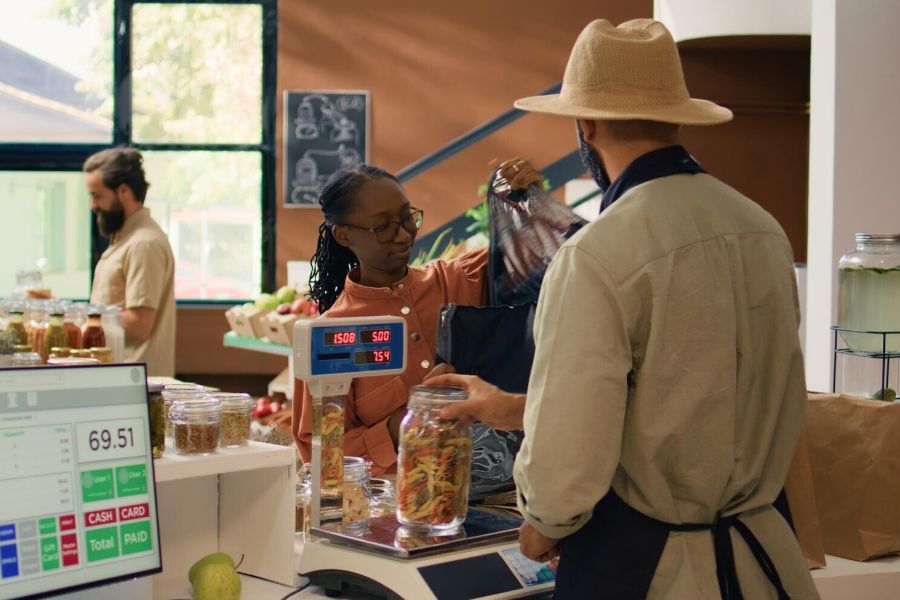Seemingly promising customer journeys often end in frustration as items are left untouched in virtual shopping carts, resulting in an industry-wide abandonment rate of nearly 70%. The question that remains is why?
What role do checkouts, trust, shipping information, return policies, and payment options play in this scenario?
Let’s explore the underlying causes of cart abandonment and go over the actionable strategies to enhance the shopping experience with seamless ordering, delivery, and payment processes.
Understanding the Reasons for Cart Abandonment
Decoding cart abandonment is crucial to transform window shoppers into paying customers. Here are the main culprits:
- Complex checkout process: The checkout process shouldn’t be a maze. If it’s too complex or time-consuming, customers drop out and think the purchase just isn’t worth the effort.
- Lack of trust in the website or product: If the site seems sketchy or if customers question the product’s quality or genuineness, they’ll likely abandon their cart. Unprofessional site design, insufficient security markers, and inadequate product details can fuel this distrust.
- Inadequate shipping and delivery information: E-shoppers crave transparency, particularly about shipping and delivery. Unclear or inaccurate information leads to cart abandonment.
- Unfavorable return and refund policies: Online shopping is risky because customers can’t inspect products physically before purchasing. Strict or complex return and refund policies only push them away.
- Limited payment options: Limited options might discourage a buyer that wants to use a specific payment method. Diverse, secure payment options enhance checkout and reduce cart abandonment.
Analyzing these factors can also offer insights into customer behaviors and preferences — vital for shaping strategies to meet customer needs and deliver a seamless shopping experience. Happy customers often turn into repeat customers, generating steady revenue and possibly attracting others through positive feedback.
Strategies to Minimize Cart Abandonment
A strategic focus on enhancing website usability, streamlining the checkout process, providing clear shipping and delivery details, and offering customer-friendly return policies all work together to significantly reduce cart abandonment rates.
#1: Improve Website Usability and Trust
A well-structured, user-friendly website can make or break a shopping experience. A website should be as accommodating as a physical shop with organized aisles.
Boost usability by simplifying navigation and search features, logically grouping similar items, offering filter options, and making checkout swift and easy. Don’t forget mobile optimization, given the rising trend of shopping via smartphone.
Cultivating trust is key to reducing cart abandonment: customer reviews, testimonials, and security badges are crucial.
Customer reviews and testimonials offer social proof of your product’s or service’s reliability. A BrightLocal survey reveals that 46% of consumers trust online reviews as much as personal recommendations. Featuring these testimonials across the site and especially on product pages can encourage new visitors to buy.
Security badges also bolster trust by confirming that user data is safe: 17% of US online shoppers left their carts because they were worried about credit card information security. Recognized security badges ease these fears and drive conversions.
#2: Simplify the Checkout Process and Provide Paying Flexibility
The checkout must be user-friendly, efficient, and hassle-free: each extra step or information request pushes customers toward cart abandonment. Reduce the number of fields to essential information, like shipping details and payment information, and provide an option to save this data for future shopping.
A guest checkout option is also beneficial. While customer accounts are helpful for marketing, enforcing account creation can discourage some shoppers, especially first-time ones.
As more consumers shop using smartphones, an unoptimized mobile process can cause cart abandonment. The checkout should be responsive and automatically fit the screen size. The text should be easy to read, buttons should be tap-friendly, and the site should load swiftly. Consider incorporating digital wallet options like Apple Pay or Google Pay for easier mobile payments.
Enable shoppers to pay with everything from credit and debit cards to digital wallets like PayPal or Apple Pay. For higher-priced items, consider installment plans through services like Afterpay, Klarna, or Affirm. This makes larger purchases more financially manageable and reduces the likelihood of shoppers leaving mid-purchase.
Regardless of the variety of payment options, customers may leave their carts if the payment process seems insecure. Utilize secure socket layer (SSL) encryption to safeguard sensitive data.
#3: Enhance Transparency in Shipping and Delivery Information
Unexpected or hidden shipping costs are one of the primary reasons customers abandon their carts: 48% of US online shoppers have abandoned a cart due to high extra costs like shipping, tax, and fees.
To counter this, disclose all shipping costs early in the shopping process. Provide this information clearly on product pages or early in the checkout process so that customers are aware before they finalize their purchases.
Offering multiple shipping options like next-day delivery, standard shipping, and even in-store pick-up caters to a wide range of customer needs. This flexibility enhances the overall shopping experience and decreases the chances of cart abandonment.
Share an estimated delivery timeline to manage expectations about the wait time for the products. This prevents any unpleasant surprises and helps to build trust with customers.
Keeping customers informed about their order status post-purchase assures them that their order is being handled efficiently. Regular updates, from the order confirmation to the delivery, can address any potential concerns regarding order fulfillment.
To earn an A+, you can use an automated email or SMS notification system to update customers when their order is processed, shipped, and out for delivery. Providing tracking information that allows customers to check their delivery status whenever they want also contributes to a positive shopping experience.
#4: Establish Clear Return and Refund Policies
The ecommerce return policy should clearly specify which items can be returned, under what conditions, and within what timeframe. Any exceptions or particular conditions should also be clearly communicated.
Make the return policy easily accessible: it shouldn’t be buried deep on the website. Consider prominently displaying the policy during the checkout process and linking to it in the website header or footer. This kind of transparency reassures customers and allows them to shop with confidence.
Strive to make the return process as straightforward as possible by providing clear instructions, pre-paid return labels, and easy-to-print return slips.
Consider providing a generous return window to give customers enough time to decide if they want to keep the product. If feasible, provide an option for in-store returns as well to cater to different customer preferences.
Lastly, create a swift refund process. Quick refunds convey respect for customers’ time and money, fostering trust and encouraging future purchases.
From Abandoned Carts to Completed Sales
Online retailers must routinely assess and optimize their processes to reduce cart abandonment rates, increase conversions, and improve overall profitability.
How well does the current shopping experience reflect the values and expectations of customers, and where does the greatest opportunity for improvement lie?
With the insights and strategies discussed, contact us to upgrade the e-commerce processes and transform those abandoned carts into successful, profitable sales.
►►► See our products: Magento POS, BigCommerce POS, Shopify POS, Woocommerce POS, NetSuite POS, Commercetools POS, Custom POS, White label POS, Customer Experience Solution and Next-Gen POS




